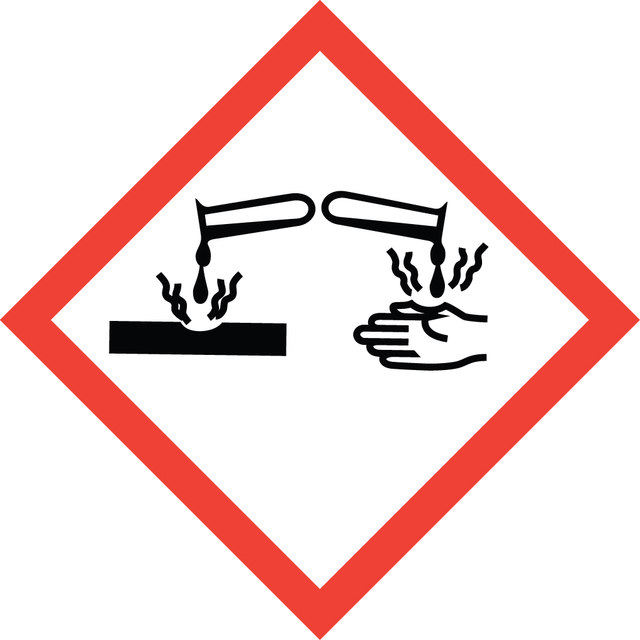选择尺寸
关于此项目
一般描述
应用
- Methylene building block in the Mannich reaction with primary amines and alkynes to synthesize propargyl amines.
- Hydroxymethylation reagent to synthesize homoallylic alcohols by reacting with 1,1-disubstituted allenes.
- Formylation reagent in the Ir-catalyzed N-formylation of amines to synthesize formamides.
警示用语:
Danger
危险分类
Acute Tox. 4 Inhalation - Acute Tox. 4 Oral - Carc. 1B - Eye Dam. 1 - Flam. Sol. 2 - Muta. 2 - Skin Irrit. 2 - Skin Sens. 1 - STOT SE 3
靶器官
Respiratory system
储存分类代码
4.1B - Flammable solid hazardous materials
WGK
WGK 2
闪点(°F)
Not applicable
闪点(°C)
Not applicable
个人防护装备
Eyeshields, Faceshields, Gloves, type P3 (EN 143) respirator cartridges
法规信息
Which document(s) contains shelf-life or expiration date information for a given product?
If available for a given product, the recommended re-test date or the expiration date can be found on the Certificate of Analysis.
How do I get lot-specific information or a Certificate of Analysis?
The lot specific COA document can be found by entering the lot number above under the "Documents" section.
What is the difference between formaldehyde and paraformaldehyde?
Paraformaldehyde is the polymeric form of formaldehyde. It is a solid. Formaldehyde is a gas which when dissolved in water gives a formaldehyde solution. Commercially available formaldehyde solutions usually contain 10-15% methanol, which prevents the formaldehyde from forming the polymeric paraformaldehyde.
How does Product 158127, Paraformaldehyde, compare to prilled paraformaldehyde?
Prilled has the appearance of small white beads. Product 158127 is a powder, not prilled.
Do you have a recommended method for preparing solutions of Paraformaldehyde, Product 158127?
Paraformaldehyde does not dissolve but rather can be depolymerized in solution. Depolymerized solutions can be prepared in water with heating to 55-60°C. If necessary, further addition of 1-2 drops of a sodium hydroxide solution may be required. Some protocols suggest that paraformaldehyde should be prepared in buffered solutions such as phosphate buffer or PBS at approximately pH 7.
How stable are solutions of Product 158127, Paraformaldehyde?
Buffered solutions of 2-4% formaldehyde may be used for up to two weeks if stored in brown bottles at 2-8°C.
How do I find price and availability?
There are several ways to find pricing and availability for our products. Once you log onto our website, you will find the price and availability displayed on the product detail page. You can contact any of our Customer Sales and Service offices to receive a quote. USA customers: 1-800-325-3010 or view local office numbers.
What is the Department of Transportation shipping information for this product?
Transportation information can be found in Section 14 of the product's (M)SDS.To access the shipping information for this material, use the link on the product detail page for the product.
What are the differences between the Paraformaldheyde products and which is best suited for use as a fixative for Electron Microscopy?
Product 16005 is sold only in Europe and is not available to US customers.The primary differences among the various products is in the form for each product. P6148 is listed as crystalline, 158127 is listed as powder, and 441244 is listed as prilled. The product information page for 441244 states the prilled form will go into solution more readily, but the prilled, crystalline, and powder forms are equivalent in terms on use. The prilled form is expected to slow down the rate of sublimation compared to the powder or the crystalline forms. Any of the 3 products should be suitable for use as a fixative. However, once prepared, paraformaldehyde solutions are unstable unless methanol is added as a stabilizer. Customer options vary from preparing solutions daily to storing solutions for 2 or 3 weeks. If used as a fixative for electron microscopy, we recommend preparing solutions fresh daily to avoid the risk of repeating tedious EM work due to deterioration of the fixative. For less critical applications, it would be more acceptable to use solutions stored for longer periods of time.
My question is not addressed here, how can I contact Technical Service for assistance?
Ask a Scientist here.
实验方案
Formaldehyde cross-linking protocol detects specific protein interactions with confidence.
本协议描述了一种使用甲醛完成化学交联蛋白质的方法。除零长交联剂外,甲醛是交联跨度最短(~2-3 Å)的交联剂,因此使其成为非常可靠地检测特定蛋白质-蛋白质相互作用的理想工具。
我们的科学家团队拥有各种研究领域经验,包括生命科学、材料科学、化学合成、色谱、分析及许多其他领域.
联系客户支持


